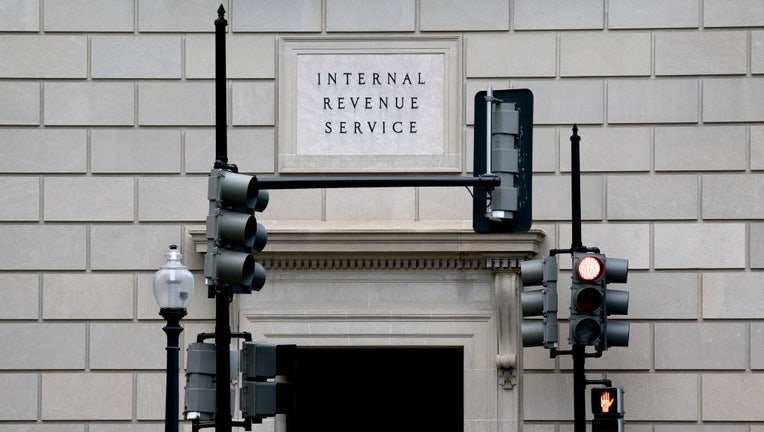Expecting a 2022 tax refund? Tips for getting your money back faster

The Internal Revenue Service (IRS) building in Washington, D.C., U.S., on Saturday, June 26, 2021. The Federal Reserve might consider an interest-rate hike from near zero as soon as late 2022 as the labor market reaches full employment and inflation
WASHINGTON - The 2022 tax season is officially underway, and the IRS has a few tips for Americans looking to get their tax refund as quickly as possible.
While the IRS is facing a "challenging" tax season that promises to bring complications and potential delays for taxpayers as the agency wades through a deluge of unprocessed paper returns, there are some steps that taxpayers can take in order to get their money back faster.
Experts have urged taxpayers to file their tax returns as soon as possible, noting that individuals do not need previous returns in order to submit their 2021 returns. Americans are encouraged to file electronically with direct deposit in order to avoid potential delays and receive their return within 21 days.
SIGN UP TODAY: Get daily headlines, breaking news emails from FOX6 News
Still, many taxpayers wind up waiting far longer than 21 days for their refund – and it's often due to simple math mistakes on their tax returns or identity theft delays.
Eric Bronnenkant, head of tax at online financial adviser Betterment, said Americans should file their returns as soon as they're ready in order to help avoid tax fraud, because there's a "huge problem" where fraudsters find someone's Social Security number, illegally file a return on their behalf and claim the refund.
"The best way to mitigate someone illegally filing a return on your behalf is to file as soon as possible and to get ahead of the game," Bronnenkant said.
There are fresh challenges facing the IRS – and individual filers – this year: Taxpayers will have to reflect the monthly child tax credit payments and the stimulus checks they received in 2021 on their returns, further complicating matters and increasing the likelihood of errors and delays in processing returns.
"Any time you get a tax credit and you need to reconcile that when you file, you want to make sure you put the correct number down when you file, otherwise that may delay your return and your refund that you might otherwise be entitled to," Bronnenkant said. "Knowing what payments you got up front and appropriately recording those will go far in reducing some of the friction in filing."
Families that received monthly installments of the boosted child tax credit last year will receive a letter – called Letter 6419 – from the IRS informing them of the total amount of the advanced payment they received and the number of qualifying children used to calculate the payments.
Because at least half of the enhanced credit will be paid out as a lump sum when parents receive their 2021 tax return, recipients should keep the letter and use it to accurately reconcile the credit they already received when filing their taxes this year. The information is pertinent to determining how much more money families receive from the credit when they fill out Schedule 8812 and Form 1040.
"There are important steps people can take to ensure they avoid processing delays and get their tax refund as quickly as possible," IRS Commissioner Chuck Rettig told reporters on Monday. "We urge people to carefully review their taxes for accuracy before filing. And they should file electronically with direct deposit if at all possible; filing a paper tax return this year means an extended refund delay."
If taxpayers file an electronic return with no issues and opt to receive the refund via direct deposit, the IRS anticipates the money will arrive within 21 days. Last year's average tax refund was more than $2,800.
FREE DOWNLOAD: Get breaking news alerts in the FOX6 News app for iOS or Android
The tax-filing season will end on April 18 this year for most individuals, rather than the usual deadline of April 15, because that's when Emancipation Day will be observed in Washington, D.C.
Taxpayers can request an extension online by filling out Form 4868 using the IRS’ "Free File" tool. You need to submit the form by April 18, or print the form and mail it to the IRS address for your state, making sure it's postmarked by April 18.

COVID test sites remain closed amid investigations into provider
Ten coronavirus test sites across southeast Wisconsin will remain closed until further notice. Meanwhile, investigations into the test provider are heating up.

